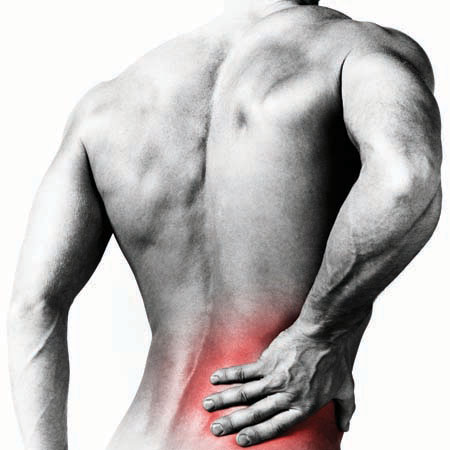Lower back pain is perhaps the most common musculoskeletal issue and almost everyone experience at least one episode of backache at some point of their lives. Regardless of the cause or time of the occurrence of pain, back pain can surely give you a tough time! Healthcare providers believe that simple home remedies like application of ice or heat to the site of pain is often helpful in the alleviation of symptoms. Ice or heat therapy helps to relax the affected area and restore the adequate blood flow within the body, especially across the inflamed tissues by reducing swelling or edema. When used in combination, these two agents are not only helpful in easing the pain but also in minimizing the risk of recurrence.
How Does Ice or Heat Work for Lower Back Pain?

Heat Therapy
When an appropriate heating object is placed onto the skin, it initiates the process of vasodilation, i.e. enlargement or widening of blood vessels. This directly helps in relaxing the muscles while improving the overall circulation. Enhanced blood flow to the inflammatory zones helps in delivering oxygen as well as vital nutrients that are transported to the affected areas in order to produce healing effects. As a result of improved blood flow, the free radicals, toxins and cellular waste products are efficiently excreted from the tissues to promote pain-free healing.
Cold Therapy
Unlike heat therapy, cold therapy causes vasoconstriction i.e. narrowing of blood vessels. As a result, the muscles flex and the inflammation, responsible for pain, reduces to a significant degree. Often, ice packs are employed for cold therapy.
How to Apply Ice or Heat for Lower Back Pain
Heat for Lower Back Pain
Heat therapy can be obtained via a variety of techniques and methods including using warm towels, hot stone or hot water packs. Another feasible, relaxing and most commonly used technique is soaking in the hot bath-tub. This is frequently practiced by the sufferers of chronic back pain.
- The recommended time period for each heat therapy session is ideally 15-20 minutes.
- You may also opt for any of the available all-day-heat wrap.
- Be cautious not to fall asleep while using electric pad. Set these pads at medium or low only.
Ice for Lower Back Pain
When going for cold therapy, either choose the commercially available cold packs or consider the following options:
- Ice towel: Pour cold water on a clean towel and wet it properly, squeezing it tight to make it damp. Fold it neatly, stuff it in a plastic bag and subject it to freezing for like 15 minutes. Apply where required.
- Ice pack: Take a plastic bag and stuff in ice cubes weighing about 1 pound. Pour some water to slightly cover the ice. Allow the air to escape the bag and then seal it firmly. Wrap a wet towel around the plastic bag. Apply where required.
- Homemade slush pack: Take 1 cup of denatured alcohol and 3 cups of water. Mix them in a bag, seal the freezer bag and freeze until slush is formed. Freeze the bag again once the slush gets melted.
- Ice cup: Pour water in a paper cup until its 2/3 full. Freeze it until it becomes a solid mass. Prior to application, remove some bits of paper cup to expose a little of the ice. Apply where required for 3-5 minutes.
Ice therapy must be done 3 times per day. For initial 72 hours, ice every other hour for 10 minutes, followed by 10 minutes every 2-3 hours. You may also ice after an extended period of activity or exercise.
Remember to keep a damp cloth sandwiched between the cold pack and the skin. Don’t ice for more than 20 minutes in a single session. Avoid sleeping with the ice on your skin.
Given below is the video to guide you when to apply heat or ice on a painful back:
Other ways to Manage Lower Back Pain
- Rest: The lower back pain is often relieved if you take adequate bed rest. However resting should only be done for a short period of time. It assists in alleviating the pain. Try not to stay in bed longer than 2 days as it may aggravate the pain and result in other associate complications like muscle weakness and stiff joints.
- Medications: Prescription and over-the-counter medicines are frequently used in combination and are a major part of the back pain therapy. It is highly recommended to speak to your primary care provider to learn what pain relieving options are best for you.
- Exercise: Make sure to incorporate a variety of exercise and physical activities that may help in strengthening your abdominal and back muscles. This will also assist in preventing recurrent attacks of pain. These muscles are responsible for supporting the spine, therefore building and strengthening the musculoskeletal architecture can enhance your posture and also minimize the risk of injury. Seek advice from your healthcare provider for making a strategic exercise plan that’s equally beneficial and effective.
- Massage therapy: This is yet another effective therapy used efficiently to alleviate stress, pain and symptoms of lower back pain. It can be employed as a multidisciplinary, comprehensive approach in the management of pain and is at times used in combination with medications, acupuncture and physical therapy.
Although ice or heat therapy is effective at delivering promising results, but if you are experiencing recurrent or severe episodes of backache, it is recommended to speak to your doctor. Poorly managed lower back pain can interfere with your quality of life significantly.
